 W
WThe Royal and Military Order of Saint Ferdinand, is a Spanish military order whose decoration, known as Laureate Cross of Saint Ferdinand, is Spain's highest military decoration for gallantry. It is awarded in recognition of action, either individual or collective, to protect the nation, its citizens, or the peace and security of the international community in the face of immediate risk to the bearer. Those eligible are current and former members of the Spanish Armed Forces.
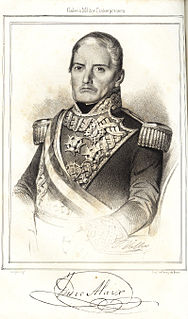 W
WIsidro de Alaix Fábregas, Count of Vergara and Viscount of Villarrobledo, was a Spanish general of the First Carlist War, supporting the cause of the Liberals, who backed Isabella II of Spain and her regent mother Maria Christina. Born at Ceuta, Alaix fought during the Spanish War of Independence and also participated in the campaigns in South America against the independence movements there.
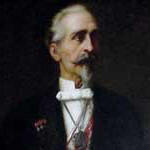 W
WFrancisco de Albear y Fernández de Lara was a Spanish engineer from Cuba.
 W
WAlfonso XII, also known as El Pacificador or the Peacemaker, was King of Spain, reigning from 1874 to 1885. After a revolution that deposed his mother Isabella II from the throne in 1868, Alfonso studied in Austria and France. His mother abdicated in his favour in 1870, and he returned to Spain as king in 1874 following a military coup against the First Republic. Alfonso died aged 27 in 1885, and was succeeded by his son, Alfonso XIII, who was born the following year. To date, he is the last monarch of Spain to have died whilst on the throne.
 W
WAlfonso XIII, also known as El Africano or the African, was King of Spain from 1886 until the proclamation of the Second Republic in 1931. He was a monarch from birth as his father, Alfonso XII, had died the previous year. Alfonso's mother, Maria Christina of Austria, served as regent until he assumed full powers on his sixteenth birthday in 1902.
 W
WGeneral William Carr Beresford, 1st Viscount Beresford, 1st Marquis of Campo Maior, was an Anglo-Irish soldier and politician. A general in the British Army and a Marshal in the Portuguese Army, he fought alongside The Duke of Wellington in the Peninsular War and held the office of Master-General of the Ordnance in 1828 in Wellington's first ministry.
 W
WMajor-General Patrick Campbell (1779–1857) was a Scottish army officer and diplomat born in Duntrune.
 W
WJuan de la Cruz Mourgeón y Achet was a Spanish general and colonial administrator.
 W
WDomènec Batet i Mestres was a Spanish military man who became general of the Spanish Army.
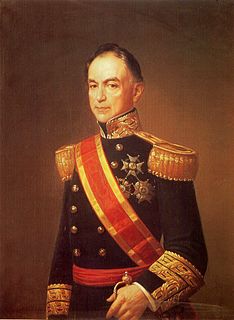 W
WJoaquín Ezpeleta Enrile was a Spanish politician and Spanish Army general officer who served as the 15th President of the Spanish Senate.
 W
WFerdinand VII was the King of Spain during the early- to mid-19th century. He reigned over the Spanish Kingdom in 1808 and again from 1813 to his death in 1833. He was known to his supporters as el Deseado and to his detractors as el Rey Felón.
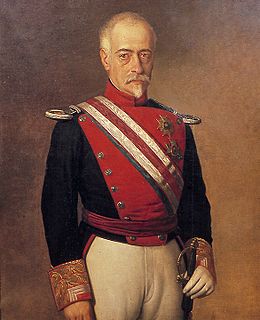 W
WFrancisco Javier Girón, 2nd Duke of Ahumada was a Spanish Army officer known for being the founder and first Director-General of the Civil Guard.
 W
WFermín Galán Rodríguez was a Spanish soldier known for leading the failed Jaca uprising a few months before the foundation of the Second Spanish Republic. He was of peasant origins, although his father was in the Navy. His father died when he was 10, and soon after he was enrolled in a boarding school for military orphans. This prepared him for military academy, and in 1918 he graduated as a lieutenant. He served in Morocco, where he learned Arabic, gained a reputation as an African expert and was promoted to Captain.
 W
WPrince Gaston of Orleans, Count of Eu, the first son of Louis, Duke of Nemours, and Princess Victoria of Saxe-Coburg and Gotha, was a French prince and military commander who fought in the Spanish-Moroccan War and the Paraguayan War. Gaston was married to Princess Isabel, heiress to the Brazilian throne.
 W
WMariano Gómez-Zamalloa y Quirce was a Spanish military officer and colonial administrator.
 W
WHenry Inman (1816–1895) was an English cavalry officer, pioneer of South Australia, founder and first commander of the South Australia Police, overlander and Anglican clergyman.
 W
WDon Diego de León y Navarrete was a Spanish military figure. As a young man, he entered the Spanish army as a cavalryman and achieved the rank of captain at the age of 17.
 W
WDom Luís I, known as The Popular was a member of the ruling House of Braganza, and King of Portugal from 1861 to 1889. The second son of Queen Maria II and her consort, King Ferdinand, he acceded to the throne upon the death of his elder brother King Pedro V.
 W
WGabriel de Mendizábal Iraeta "Primer Conde de Cuadro de Alba de Tormes" was a Spanish general officer who fought in the Peninsular War. He is known for his command of Spanish forces during the Battle of the Gebora. It is important to note that Mendizábal rose through the ranks of the Spanish army, and was not of noble birth.
 W
WJosé Olaguer Feliú y Ramírez was a Spanish lieutenant general, Minister of War and politician.
 W
WMelitón Pérez del Camino (1772–1845) was a squad leader of the Royal Spanish Navy.
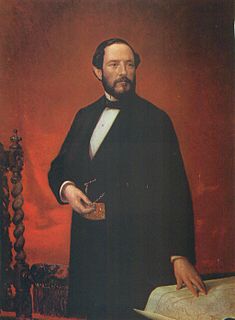 W
WJuan Prim y Prats, 1st Count of Reus, 1st Marquess of los Castillejos, 1st Viscount of Bruch was a Spanish general and statesman who was briefly Prime Minister of Spain until his assassination.
 W
WGonzalo Queipo de Llano y Sierra was a Spanish military leader who rose to prominence during the July 1936 coup d'état and the subsequent Spanish Civil War and White Terror.
 W
WManuel Ruigómez y Velasco was a Spanish Army officer known for his role as a General in the Rif War, during the period of Colonial Africa. In 1919, he was awarded the Laureate Cross of Saint Ferdinand, Spain's highest decoration for gallantry.
 W
WJosé Sanjurjo y Sacanell, was a Spanish general, one of the military leaders who plotted the July 1936 coup d'etat which started the Spanish Civil War.
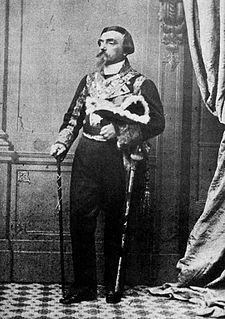 W
WDom Sebastian Gabriel of Bourbon and Braganza, Infante of Portugal and Spain, was an Iberian prince of the 19th century, progenitor of the Spanish ducal lines of Hernani, Ansola, Dúrcal and Marchena, and Carlist army commander in the First Carlist War.
 W
WFrancisco Serrano Domínguez Cuenca y Pérez de Vargas, 1st Duke of la Torre, Grandee of Spain, Count of San Antonio was a Spanish marshal and statesman. He was Prime Minister of Spain in 1868–69 and regent in 1869–70.
 W
WTerç de Requetès de la Mare de Déu de Montserrat was a battalion-type Carlist infantry unit, forming part of Nationalist troops during the Spanish Civil War. It is known as one of two Catalan units fighting against the Republicans. It is also recognized as the Nationalist unit which recorded the highest KIA ratio of 19%, with corresponding average Nationalist figure estimated at 6%. Its operational history consists mostly of long periods of inactivity or low-intensity skirmishes punctuated by two heavy combat engagements, culminating on August 25, 1937 and August 19, 1938.
 W
WJuan Bautista Topete y Carballo, Spanish admiral and politician.
 W
WUmberto I, nicknamed the Good, was the King of Italy from 9 January 1878 until his assassination on 29 July 1900.
 W
WJoaquín Vara de Rey y Rubio was a career Spanish military officer. He is best known for leading the stubborn defense of El Caney against a massively superior American force during the Spanish–American War.
 W
WJosé Enrique Varela Iglesias, 1st Marquis of San Fernando de Varela was a Spanish military officer noted for his role as a Nationalist commander in the Spanish Civil War.
 W
WArthur Wellesley, 1st Duke of Wellington, was an Anglo-Irish soldier and Tory statesman who was one of the leading military and political figures of 19th-century Britain, serving twice as prime minister. He ended the Napoleonic Wars when he defeated Napoleon at the Battle of Waterloo in 1815.
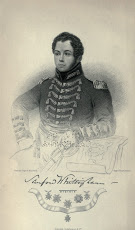 W
WLieutenant General Sir Samuel Ford Whittingham, whose Christian names were contracted by himself and his friends into "Samford", was a British and Spanish army officer during the Napoleonic Wars. Following the conflict he served in the British Army predominately in India.
 W
WWilliam I or Wilhelm I of the House of Hohenzollern was King of Prussia from 2 January 1861 and the first German Emperor from 18 January 1871 to his death. William was the first head of state of a united Germany, and was also de facto head of state of Prussia from 1858 to 1861, serving as regent for his brother, Frederick William IV.